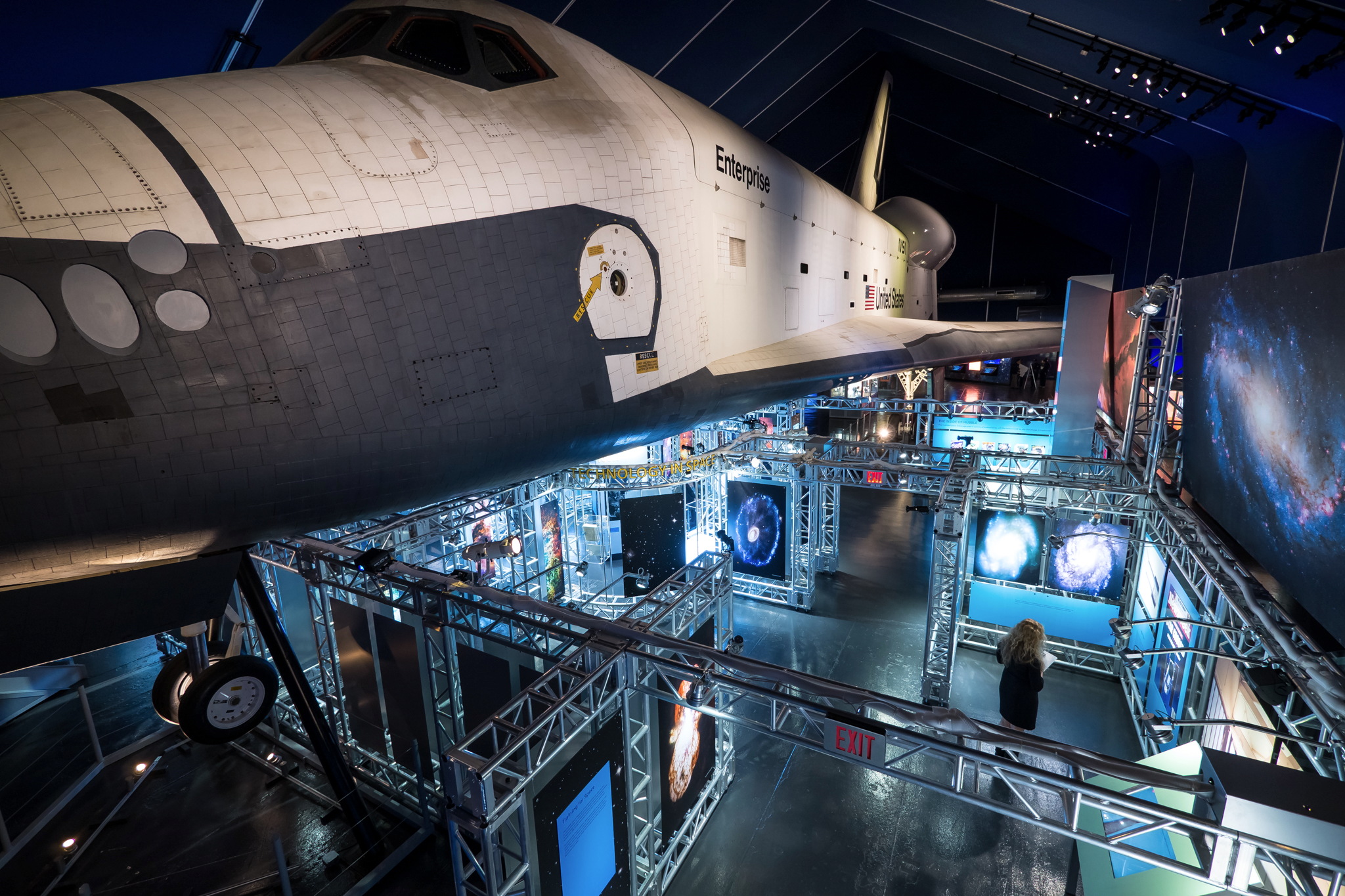NASA Centers to Visit for an Out of This World Vacation
Other NASA Visitor Centers

There are three major NASA visitor centers that are not associated with a particular NASA facility, but are worth a visit if you're nearby.
The Intrepid Sea, Air and Space Museum
NASA fans visiting New York City this summer should consider paying a visit to the Intrepid Sea, Air and Space Museum, home to the very first space shuttle, Enterprise. The museum is built on the retired aircraft carrier Intrepid, which served as a NASA recovery vessel in the 1960s. It's a great destination for fans of spaceflight and aviation.
General admission to the Intrepid museum is $33, and viewing the shuttle is included in the price. Children under 5 are free, and there are reduced admission prices for seniors and kids ages 5 to 12. Members of the museum get free admission to all exhibits. While you're in the area, consider also taking a trip to the Hayden Planetarium at the American Museum of Natural History.
Smithsonian National Air and Space Museum and Steven F. Udvar-Hazy Center
The Smithsonian National Air and Space Museum is a prime destination for fans of spaceflight, space exploration and aviation. Check the complete list of exhibits to get an idea of just how much the museum has to offer. The museum's main facility is in Washington, D.C., but there is a second facility in Chantilly, Virginia, that houses the space shuttle Discovery, which flew 39 missions — more than any other shuttle.
Admission to both facilities is free. Check the museum's website for hours of operation and other details. The Udvar-Hazy Center has lots of other artifacts and vehicles from the history of space and aviation, as well as an IMAX theater.
California Science Center
For vacationers on the West Coast, the space shuttle Endeavour is on display at the California Science Center in Los Angeles (less than an hour's drive from NASA's Jet Propulsion Laboratory in Pasadena). The science center is a massive, hands-on museum with some other spaceflight artifacts, including the Apollo-Soyuz command module that joined American and Russian spacecraft together in orbit in 1975; the Gemini 11 capsule that flew two human passengers into space in 1966; and the Mercury-Redstone 2 capsule that took Ham the chimpanzee into space.
Admission to the center is free, but visitors must pay for admission to IMAX movies and special exhibits.
Join our Space Forums to keep talking space on the latest missions, night sky and more! And if you have a news tip, correction or comment, let us know at: community@space.com.
Get the Space.com Newsletter
Breaking space news, the latest updates on rocket launches, skywatching events and more!

Calla Cofield joined Space.com's crew in October 2014. She enjoys writing about black holes, exploding stars, ripples in space-time, science in comic books, and all the mysteries of the cosmos. Prior to joining Space.com Calla worked as a freelance writer, with her work appearing in APS News, Symmetry magazine, Scientific American, Nature News, Physics World, and others. From 2010 to 2014 she was a producer for The Physics Central Podcast. Previously, Calla worked at the American Museum of Natural History in New York City (hands down the best office building ever) and SLAC National Accelerator Laboratory in California. Calla studied physics at the University of Massachusetts, Amherst and is originally from Sandy, Utah. In 2018, Calla left Space.com to join NASA's Jet Propulsion Laboratory media team where she oversees astronomy, physics, exoplanets and the Cold Atom Lab mission. She has been underground at three of the largest particle accelerators in the world and would really like to know what the heck dark matter is. Contact Calla via: E-Mail – Twitter
